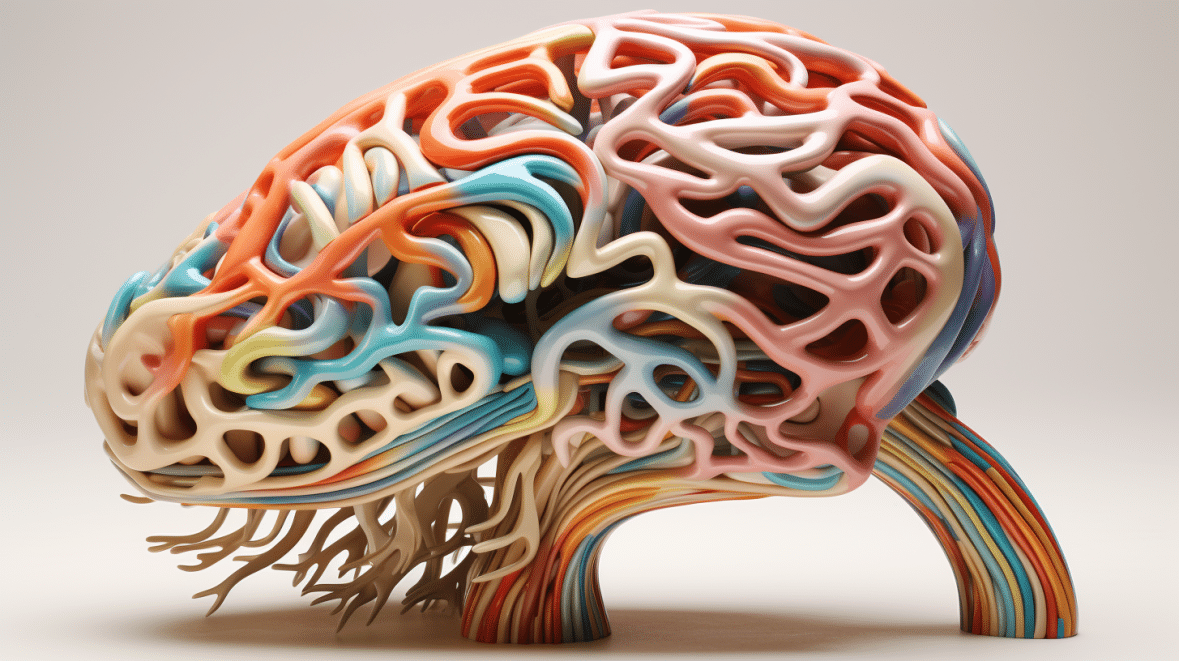Personality disorders like borderline and avoidant involve differences in brain structure and function that relate to symptoms.
New research sheds light on the neurobiology underlying these disorders.
Key Facts:
- Borderline patients showed reduced medial prefrontal cortex (MPFC) volume compared to healthy controls. MPFC is involved in cognitive control of emotion.
- Both borderline and avoidant patients showed a positive correlation between right amygdala volume and state anxiety, unlike healthy controls. The amygdala processes emotions like fear.
- In healthy controls only, greater MPFC volume correlated with lower anxiety, and greater dorsolateral prefrontal cortex (DLPFC) volume correlated with lower affective instability. These regions are involved in cognitive control.
- The findings suggest the role of MPFC and DLPFC in compensating for the effect of amygdala volume on symptoms in healthy controls. This compensatory mechanism may be disrupted in borderline and avoidant patients.
Source: J Affect Disord.
Brain Structure Differences in Borderline and Avoidant Personality Disorders
Borderline personality disorder (BPD) and avoidant personality disorder (AvPD) are characterized by emotional difficulties like high anxiety, affective instability, and interpersonal hypersensitivity.
Researchers investigated whether patients with these disorders show differences in brain structure compared to healthy individuals, and if brain structure relates to symptoms.
29 BPD patients, 27 AvPD patients, and 29 healthy controls underwent MRI scans to determine gray matter volumes in regions of interest:
- Amygdala – processes emotions like fear
- Hippocampus – involved in memory
- Medial prefrontal cortex (MPFC) – involved in emotional control
- Dorsolateral prefrontal cortex (DLPFC) – involved in cognitive functions like attention
- Anterior cingulate cortex (ACC) – involved in cognitive control
Participants also completed questionnaires assessing state and trait anxiety and affective instability.
Key Finding 1: Reduced MPFC Volume in Borderline Patients
The study found reduced MPFC volume in BPD patients compared to healthy controls.
MPFC is important for emotional control processes like reappraisal and mentalizing.
This structural difference may contribute to BPD patients’ difficulties regulating emotions.
AvPD patients also showed a trend towards reduced MPFC volume relative to controls.
This suggests abnormal MPFC structure could underlie emotional dysfunction transdiagnostically across both disorders.
Key Finding 2: No Amygdala Volume Differences

Contrary to some prior studies, the researchers found no significant differences in amygdala volume between BPD or AvPD patients and healthy controls.
The amygdala processes emotions like fear and drives anxiety.
This suggests amygdala structure may not directly contribute to personality disorder symptoms.
Any role is likely more complex.
Key Finding 3: Dorsal ACC Reductions in Borderline Patients
The study also found reduced gray matter volume in the dorsal region of the ACC (dACC) in BPD patients at a trend level compared to controls.
The dACC is thought to be more involved in cognitive control than emotional processing.
This suggests BPD patients may have particular structural deficits in control-related ACC regions.
Relationships Between Brain Structure and Symptoms
In addition to group differences in structure, the researchers examined how individual variations in regional brain volumes relate to anxiety and affective instability within each group.
Key Finding 4: Amygdala-Anxiety Link Only in Patients
In BPD and AvPD patients, larger right amygdala volume correlated with higher state anxiety.
However, there was no such relationship in healthy controls.
The amygdala-anxiety link in patients suggests their amygdala structure may increase vulnerability to excessive anxiety responses.
Healthy controls may somehow compensate for the effect of amygdala volume on anxiety.
Key Finding 5: MPFC and Anxiety Linked Only in Controls
In healthy controls only, larger MPFC volume correlated with lower state and trait anxiety.
No relationship was seen in patients.
This suggests MPFC structure may help mitigate anxiety in healthy individuals.
But this compensatory mechanism could be disrupted in BPD and AvPD patients.
Key Finding 6: DLPFC and Instability Linked Only in Controls
Similarly, higher DLPFC volume correlated with lower affective instability in healthy controls but not personality disorder patients.
The DLPFC is involved in cognitive control functions like selective attention.
This brain-behavior link may represent another compensatory mechanism for regulating emotions that is selectively impaired in patients.
The Big Picture: Brain structure in BPD & AvPD
Together, the findings paint a picture of how healthy brain structure may compensate for the effect of an enlarged amygdala to regulate emotions, a mechanism that could be compromised in borderline and avoidant personality disorders.
In healthy controls, larger MPFC and DLPFC volumes associate with lower anxiety and instability.
These prefrontal regions involved in cognitive control may downregulate emotional responses, counteracting symptomatic effects of increased amygdala size.
But in personality disorder patients, the link between MPFC/DLPFC structure and reduced symptoms is absent.
And larger amygdala instead correlates with higher anxiety.
This suggests patients lack the same compensatory mechanism of prefrontal regions modulating amygdala’s influence over symptoms.
The disruptions to this compensatory network could arise from structural deficits in MPFC/ACC that impair regulatory functions.
This highlights a neurobiological basis for affective disturbances in borderline and avoidant personality disorders.
Understanding the neural underpinnings of the disorders can inform targeted treatments, like cognitive therapies that aim to strengthen prefrontal control mechanisms.
Overall, the research advances knowledge of how personality disorder symptoms relate to brain structure abnormalities.
References
- Study: Brain structural abnormalities in borderline and avoidant personality disorder patients
- Authors: Bryan T. Denny et al. (2018)







